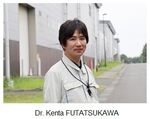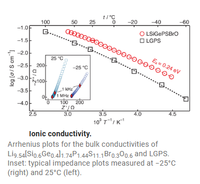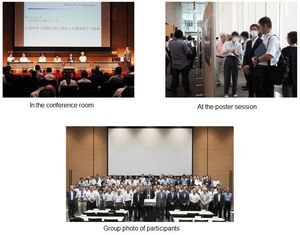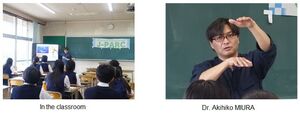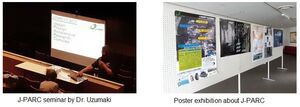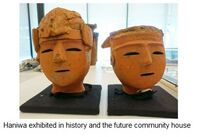J-PARC News July 2023 (Issue #219)
■J-PARC Special Lecture 2023
Nobel Prize Laureate in Physics, Dr. Takaaki KAJITA, And Other Scientists Give Science Talks (on July 1, at Tokai Cultural Center and live-streamed on YouTube)
A special lecture entitled "The Hyper-Kamiokande Project Finally Begins" was held.
A total of 348 people came to the Tokai Cultural Center, and many people also watched the event via live streaming.
The lecture was moderated by Arisa Kuroda, a personality who had majored in physics, and began with opening remarks by Takashi Kobayashi, Director of J-PARC, and Osamu Yamada, Mayor of Tokai village.
At the beginning of the lecture, Dr. Takaaki KAJITA, who received the Nobel Prize in Physics in 2015, a President of the Science Council of Japan, a Distinguished Professor and a Special University Professor Emeritus of the University of Tokyo, and a Professor of the Institute for Cosmic Ray Research, explained the discovery of neutrinos, the existence of mass of neutrino, and the mechanism of neutrino oscillation, along with the historical background, in a talk entitled "The Mystery of Neutrinos". Next, Dr. Ken Sakashita, Neutrino Section Leader, gave a talk entitled "Neutrinos Made at J-PARC," introducing neutrino research at J-PARC and explaining plans for upgrading the experimental facilities in the Hyper-Kamiokande project and the expected results. Subsequently, Dr. Atsuko Ichikawa, Professor of the Graduate School of Science and Faculty of Science, Tohoku University, gave a talk entitled "Secrets of the Universe Explored by the Hyper-Kamiokande," introducing the progress of the construction of the Hyper-Kamiokande and how the completion of upgrading the facility will accelerate research on CP violation and other topics.
The panelists, including the speakers, were asked many questions during the question-and-answer session that followed the talks. For example, a fifth grader in elementary school asked, "Why do neutrinos, which have no electric charge, changes to subatomic particles with non-zero electric charge when they collide with atomic nuclei?" The panelists responded in an understandable manner with sincerity. Finally, the panelists and the audience participants, ranging from elementary to high school students, were photographed together on the stage.
Before this event, Dr. Tetsuro Sekiguchi of the Neutrino Section gave lectures entitled "Shoot Neutrinos into Hyper-Kamiokande!" at Tokai Junior High School and Tokai Minami Junior High School. Some of the students who heard his lecture visited and joined this special event.
Please watch the J-PARC Special Lecture 2023 archive at the following link.
https://www.youtube.com/watch?v=Brg1Tapv3jw (only in Japanese)
■Dr. Kenta FUTATSUKAWA Receives Award for Technological Contribution from Particle Accelerator Society of Japan
Dr. Kenta FUTATSUKAWA of the Accelerator Division received the 19th PASJ Award for Technological Contribution for his feat of "Research and development of beam loading compensation system in high-currency pulsed proton beam linear accelerator." The beam loading compensation system is one of the most important functions for stable beam provision in high-current pulsed-beam linear accelerators such as the Linac at J-PARC. As a result of this research, it is expected that the beam loss will be suppressed at most, while the beam energy in the pulse will be uniformly adjusted and higher quality proton beams will be provided.
■New Direction for Solid-State Batteries Shown by World's Highest Conductivity Lithium-Ion Conductor
-A lithium superionic conductor for millimeter-thick battery electrode opens a way to realize new generation solid-state batteries-(June 7th)
The research team from Tokyo Institute of Technology, KEK, University of Tokyo, and J-PARC developed a solid-state electrolyte with the world's highest lithium-ion conductivity. Solid-state lithium batteries, which replace presently used electrolytes with noncombustible ones, are expected to make the battery safer from leakage and fire hazards and provide superior energy and performance characteristics.
By increasing the compositional complexity while maintaining the crystal structure of existing Li ionic conductors, new materials have been developed that provide 2.3 to 3.8 times the ionic conductivity of the original materials in the temperature range from -50°C to 55°C. Being measured and analyzed by neutron diffraction at J-PARC, the crystal structure of this new material was found to be as expected.
By using the new material developed in this research as a solid electrolyte, a 1 mm thick film was realized to extract about 90% of the theoretical energy at 25°C room temperature. The capacity per electrode area increased 1.8 times that of conventional solid-state batteries. In addition, the solid-state thick-film Li-metal anode battery with a combination of thick-film electrodes and Li-metal anode has raised expectations that a solid-state battery with features not found in current Li-ion batteries may be feasible.
This research result provides new guidance for next-generation energy storage devices that are key to the success of electric vehicles and smart grids.
For more details, please visit the following link.
https://j-parc.jp/c/en/press-release/2023/07/07001178.html
■2023 Neutron Industrial Application Report Meeting Held on July 13 and 14 (at Akihabara Convention Hall and partly online)
This report meeting focuses on matching the industry's requests and the industrial applications of neutrons and muons provided at the Materials and Life Science Experimental Facility (MLF) of J-PARC and the research reactor JRR-3.
The 6th annual event was held at the Akihabara Convention Hall, and 225 people attended over the two days at the venue.
This year marks the 15th anniversary of establishing the Industrial Users Society for Neutron Application. In addition to reviewing the progress to date, there were reports on achievements in a wide range of industries, from space science to polymers, biomaterials, metallic materials, and carbon neutrality, as well as efforts to address various issues, which were followed by a lively question-and-answer session.
■Ibaraki Prefectural Namiki Secondary School SSH* Event Held (June 23)
This event was held under the theme of "Discussion with J-PARC researchers 〜From general topics to cutting-edge science," and 15 students, equivalent to those in the first grade of junior high school through the second grade of high school, participated in the event.
The lecturer was Akihiko Miura of the Administration and Operations Support Division (concurrently in charge of Accelerator Section III), who introduced the characteristics of X-rays, neutrons, and muons, as well as J-PARC facilities, research, and roles in society. After that, the lecturer and students engaged in a lively discussion about the significance of learning science in group sessions. Some students asked questions such as what motivated them to decide on a career path, which is a common question among students preparing for university entrance exams.
This project was the brainchild of the Namiki Secondary School Student Council. Students commented, we have rarely had a chance to talk to researchers, so this was a new experience for us."
※The Ministry of Education, Culture, Sports, Science and Technology designates high schools that offer advanced science and mathematics education as "Super Science High Schools" in order to develop human resources in science and technology who can play active roles internationally in the future.
■GSA Science Seminar (July 15, Hida City, Gifu Prefecture)
GSA (Geospace Adventure) is an underground exploration event that utilizes the actual tunnel of the Kamioka Mine and cutting-edge research facilities for astrophysics, such as Super-Kamiokande. This year, the event was held for the first time in four years, and 1,078 people applied for the 150-person limit. As part of the event, a KAGURA & J-PARC Science Seminar was held at the Kamioka-cho Community Center, with 43 people attending in the morning session and 32 in the afternoon. In the J-PARC seminar, which was entitled "Want to see? Want to know? J-PARC", Dr. Tatsuya Uzumaki of JAEA (formerly of the J-PARC Public Relations Section) explained that the neutrinos being launched into Super-Kamiokande are produced at J-PARC. A participant asked, "J-PARC can accelerate proton beams, but not neutrons because they have no electric charge?" and other questions. Moreover, visitors were given an overview of J-PARC at the poster exhibition corner.
■Sanpomichi#36 -Haniwa in Tokai Village-
The following photo shows haniwa, clay figures, excavated from the schoolyard of Ishigami Elementary School in Tokai Village. The left one is a male, and the right one is a female. Both are estimated to have been made in the 6th century. In contrast to the charming haniwa with wide-open eyes and mouths that we generally describe in minds, both have neat faces with slit eyes and straight noses. They are not just artifacts from excavations but are worthy of being works of art by the criteria of the value of modern people. They are made of reddish soil mixed with white stones. Clay strings shaping rings were piled up to form the foundation of the hollow face, then the face's surface was stroked and contoured, and finally, holes were drilled for the eyes and mouth, showing the extremely advanced production techniques of that time.
Tokai Village Board of Education and J-PARC Center sponsor " Muographic Investigation of Ancient Burial Mounds in Tokai." While J-PARC aims to generate the world's most intense muon beams and gain new insights into materials and life sciences, it also explores the inside of the ancient tomb and historic culture with children.


